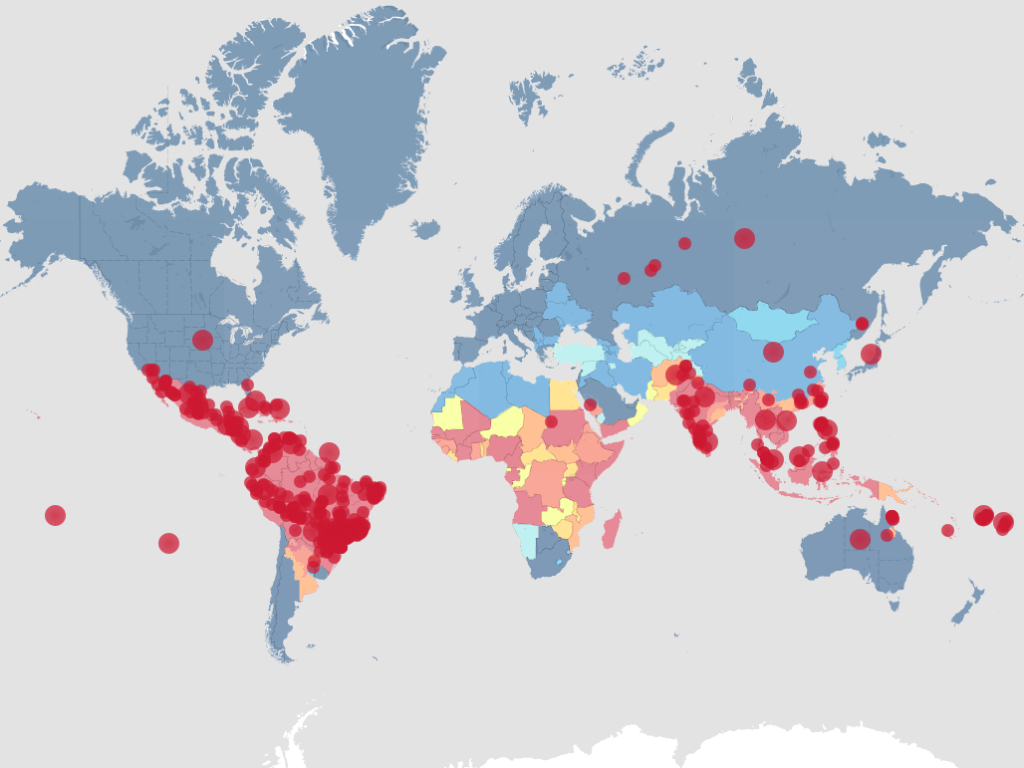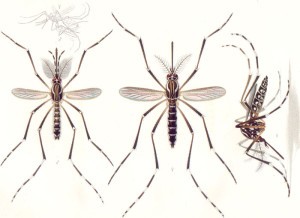In September 2013, I was speaking at a conference in New Delhi, India and had the good fortune to be part of a session that included Dr Aldo Malavasi. Aldo is an accomplished scientist from Brazil and at the time was leading Project Aedes Transgenic. The objective of this three-year project (2010-2013) was to release genetically modified sterile male mosquitoes as part of an effort to reduce dengue fever in low-income urban areas of two cities, Juazeiro and Petrolina.

Dengue Fever
Dengue fever is mosquito-borne viral infection mainly affecting tropical climates. The World Health Organization estimates roughly each year 390 million people contract the virus, with conditions ranging from mild influenza symptoms to extreme hemorrhagic fever. Dengue is caused by any one of four viruses transmitted by mosquitoes and the virus can be passed from an infected person to the biting mosquito, then to a healthy individual. In Brazil, the number of cases are increasing rapidly, from 80,000 cases in 1990 to almost one million in 2010. Fortunately, most cases are not fatal, although, in 2010, 150 people died from the virus. Since there are no preventative vaccines for the virus, chemical fogging is used to help control mosquito populations, despite its limited success.
Innovative Plan
Aldo indicated that every health authority involved in trying to cope with the rapid increase in cases of dengue fever agreed that a new approach was needed. After lengthy discussions, it was decided to genetically modify male mosquitoes to be sterile. These sterile males would be released to mate with wild female mosquitoes, resulting in larvae that would not be able to hatch, therefore, reducing the spread of mosquitoes to transmit the virus. Only sterile males are released as only females bite and transmit the virus.

For this to be successfully accepted by those living in the targeted areas, a strong and effective communication strategy was needed. A large group of university students were hired to go door to door, explaining what the project was about. This communication strategy began in the summer of 2010 with the release of 41,000 sterile male mosquitoes happening in February 2011. Following this, mosquito traps measured whether there was a drop in mosquito populations. Following this release of GM mosquitoes, the mosquito population dropped by 85%.
Success from Playing a New Little Ditty
In June 2013, the second phase of the project began. This was to release 4-5 million GM male sterile mosquitoes in Jacobina, a city of 45,000. The same door to door strategy to explain the project was used along with radio ads and a song broadcasted from trucks explaining the technology and project. Once again, the number of female mosquitoes captured in traps dropped dramatically.
Aldo Malavasi was an incredible speaker. I don’t think I’ve ever learned more from a conference speaker than I did from his presentation. Through his project using GM mosquitoes, he was able to prove that the use of this technology is an effective way to suppress the number of dengue fever cases in areas that had previously had high rates of infection. At the end of his presentation, he was adamant that the project would not have been successful if they had not had such a strong public communication strategy. Once again, this proves that as scientists, we need to do a better job of communicating with everyone in society.

Just 2 questions:
1. How to deal then with the biodiversity?
2. Aren’t there any cheaper techniques in place? For example, some repellents? Why GM Mosquitoes are better?
Thanks for the questions. I hope the responses are useful.
1. Biodiversity is only impacted for the short-term as the male mosquitoes are sterile and only live for a few days. This reduces the mosquito population for a short period of time, when the incidence of dengue is normally the highest. After the sterile GM male mosquitoes die, the mosquito population would return to normal, although the transfer of dengue would have been reduced while the mosquito population was lowered.
2. Repellents really only work at an individual level. The only large scale way of controlling for mosquito populations is to chemically fog large mosquito breeding areas. This has been widely used and is minimally effective. Chemical fogging is limited in its effectiveness as every time it rains, the chemical has to be reapplied. The environmental impact of chemical fogging is at a higher level that releasing sterile male mosquitoes. Releasing sterile male mosquitoes was seen as a more environmentally safe way of trying to control the incidence of dengue.
Pingback: Top Good News Ag & Food Stories of 2018 – Technology